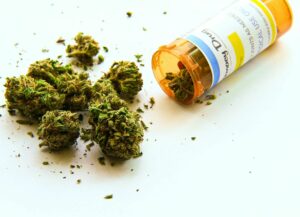Marijuana is one of the most widely used drugs in the United States, and
many studies have linked chronic use during adolescence to physical and
mental health issues in later life. However, a new
study
has challenged these findings and suggests that chronic marijuana use by
adolescents is not associated with an increased risk of adverse
long-term health effects.
Research Sheds New Light on Marijuana’s Long-Term Effects
Researchers from Rutgers University and the University of Pittsburgh
Medical Center tracked more than 400 males from adolescence into the
mid-30s to review the effects of marijuana over more than two decades.
Published in the American Psychological Association’s journal
"Psychology of Addictive Behaviors" in August 2015, the study obtained
data from the Pittsburgh Youth Study, a long-range project that began in
the late 1980s as a means to analyze the development of physical, mental
and social problems amongst male public school students.
The researchers placed the men into four groups based on self-reported
marijuana use: low or no marijuana use (46 percent), marijuana use
limited to adolescence (11 percent), marijuana use commencing in late
adolescence and continuing through adulthood (21 percent) and
early-onset chronic marijuana use (22 percent). Early-onset chronic
users reported higher marijuana use, which rapidly increased during
adolescence and peaked at the age of 22, when marijuana was used for
more than 200 days per year, on average. The men were surveyed every six
months for the first 2.5 years and then annually for 10 years until the
age of 26. A follow-up survey was conducted in 2009-2010 when the men
were 36 years old.
Marijuana Not a Significant Risk Factor
The researchers expected to find a link between adolescent marijuana use
and health issues, such as psychotic symptoms, depression, cancer,
asthma or respiratory problems in later life. However, the study
revealed no significant differences in any of the four groups in terms
of the prevalence of mental or physical health issues in the mid-30s,
irrespective of the amount or frequency of cannabis used. It also
revealed no differences based on race or ethnicity.
The findings suggest that marijuana is more beneficial than harmful and
help to discredit claims that marijuana is bad for teens. They lend
weight to the argument that marijuana should be removed from Schedule I
of the Controlled Substances Act,
a category reserved for the most dangerous drugs. Marijuana’s
classification as a Schedule I drug has been hotly debated for decades,
with medical marijuana advocates pointing to the growing body of
evidence demonstrating marijuana’s efficacy as a treatment for a variety
of health complaints.
Given that each day more than 3,000
teenagers in the
United States use marijuana for the first time, a clear understanding of
the long-term effects of marijuana must be established as more states
consider moving towards permissiveness. While critics remain concerned
that the legalization of medical marijuana will lead to a rise in
marijuana use, especially among teenagers,
research
carried out by Columbia University Medical Center in New York and
published in the journal "The Lancet" in June 2015 revealed a decrease
in teen marijuana use in states that have legalized medical marijuana.






